#lakota sioux
Text

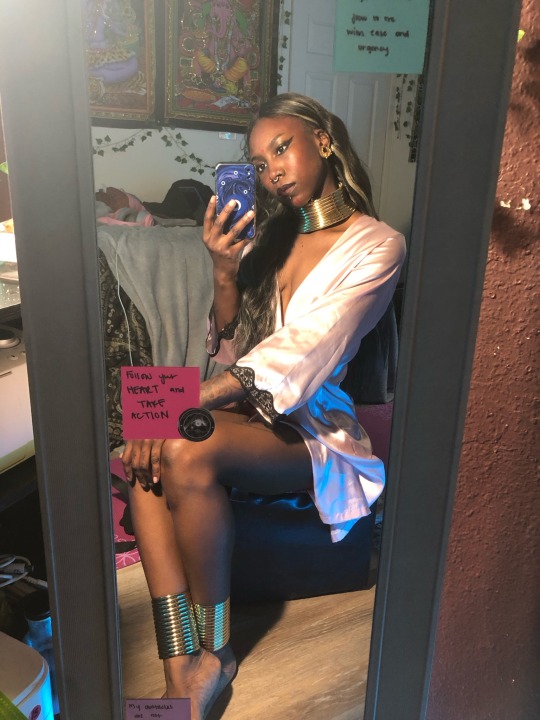
☆*・🌟Big Pharaoh Energy🌟・*☆
#ocean#winkté#two spirit#2 spirit#nonbinary#black tumblr#punk#afropunk#lesbian#black lesbian#lakota sioux#lakota
805 notes
·
View notes
Text
⚞Chief Red Shirt⚟
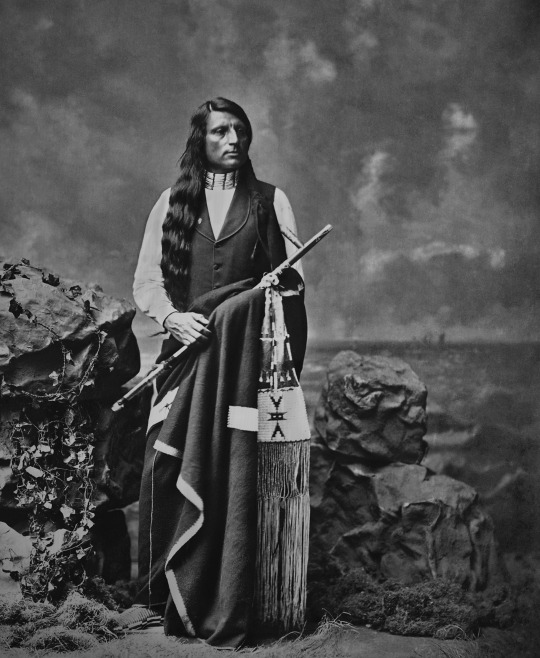
Chief Red Shirt - Oglala Sioux

Red Shirt (Oglala Lakota: Ógle Ša in Standard Lakota Orthography) (1847–1925) was an Oglala Lakota chief, warrior and statesman.
Chief Red Shirt camped with Crazy Horse and the rest of the Oglala at the Little Big Horn. The Oglala camp was next to the Cheyenne camp near the bottom of what is now known as Last Stand Hill. Red Shirt supported Crazy Horse during the Great Sioux War of 1876-1877 and the Ghost Dance Movement of 1890, and was a Lakota delegate to Washington in 1880.

Dakota delegation to Washington, D.C., Left to right, Red Dog, Little Wound, John Bridgeman (interpreter), Red Cloud, American Horse and Red Shirt. June, 1880
Chief Red Shirt wore his hair to represent peace and war. One side of his hair was wrapped to indicate he was ready for peace, the other side was worn loose indicating his readiness for war. This was done when he traveled with Chief Red Cloud to Washington D.C.

Red Shirt surrendered with Crazy Horse in 1877. After the surrender he moved to an area that is now known as Red Shirt, SD. Red Shirt was one of the first Wild Westers with Buffalo Bill's Wild West and a supporter of the Carlisle Native Industrial School. Red Shirt became an international celebrity Wild Westing with Buffalo Bill's Wild West and his 1887 appearance in England captured the attention of Europeans and presented a progressive image of Native Americans.
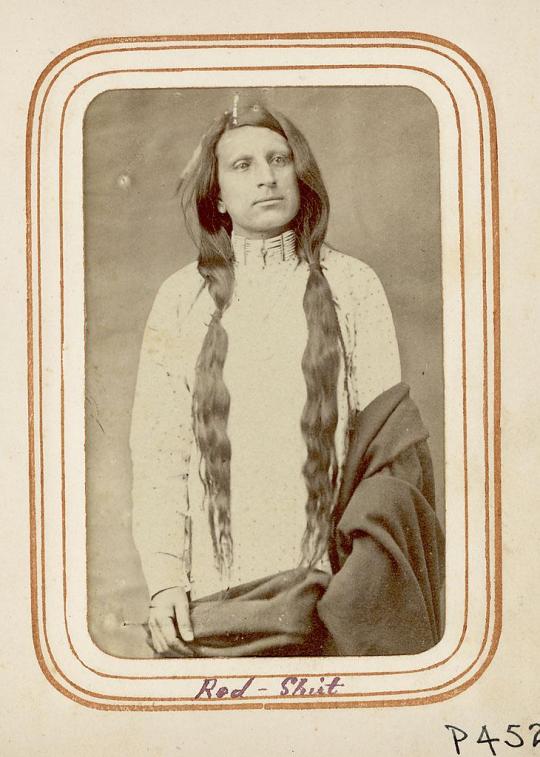

Red Shirt in Buffalo Bill's Wild West Show
On March 31, 1887, Chief Red Shirt, Chief Blue Horse and Chief American Horse and their families boarded the SS State of Nebraska in New York City, leading a new journey for the Lakota people when they crossed the ocean to England on Buffalo Bill's first international to perform at the Golden Jubilee of Queen Victoria and tour through Birmingham, Salford and London over a five–month period. The entourage consisted of 97 Indians, 18 buffaloes, 2 deer, 10 elk, 10 mules, 5 Texas steers, 4 donkeys, and 108 horses. Buffalo Bill treated Native American employees as equals with white cowboys. Wild Westers received good wages, transportation, housing, abundant food and gifts of clothing and cash from Buffalo Bill at the end of each season.
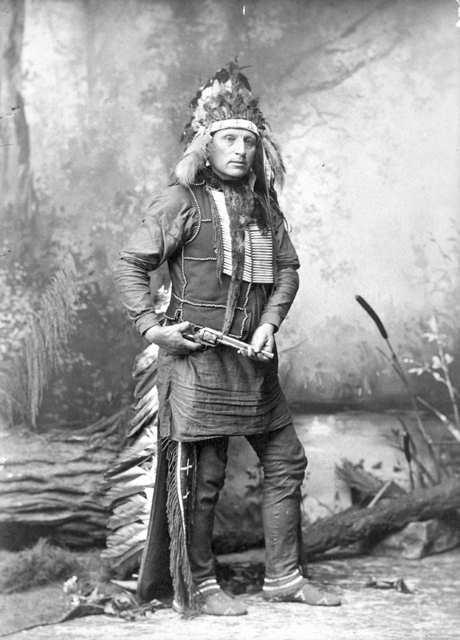
Photo from London - Red Shirt was lionized by the British press and his handsome features and stately bearing caused reporters to hang on his every word. Queen Victoria adored Chief Red Shirt and reportedly said after meeting him, "I know a real prince when I see him."

William F. "Buffalo Bill" Cody, Rosa Bonheur, Chief Rocky Bear, Chief Red Shirt, William "Broncho Bill" Irving, Roland Knoedler, and Benjamin Tedesco in front of Cody's Tent at the Paris Exposition Universelle - 1889
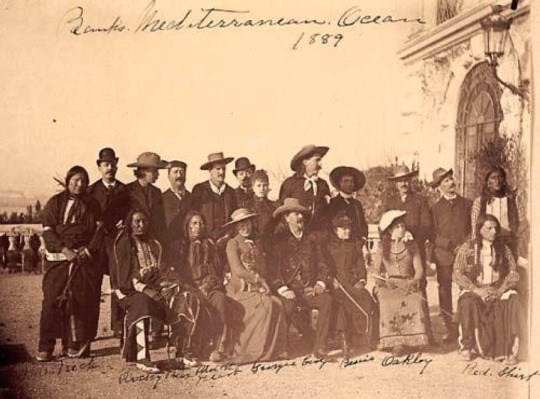
Another photo of Red Shirt - this time with Cody's company somewhere in Italy, 1890. Front row: No Neck, Rocky Bear, Black Heart, Georgie Duffy, Cody, Bessie Farrell, Annie Oakley, Red Shirt. Others in back row: Buck Taylor (fifth from right), Johnny Baker (fourth from right), Carter Couturier, advertising agent(?) (second from right), Has No Horses (far right)


Chief Red Shirt's rifle & scabbard.🔼 - Details 🔽




Chief Red Shirt was a Wild Wester for over thirty years - St. Louis World's Fair, 1904.
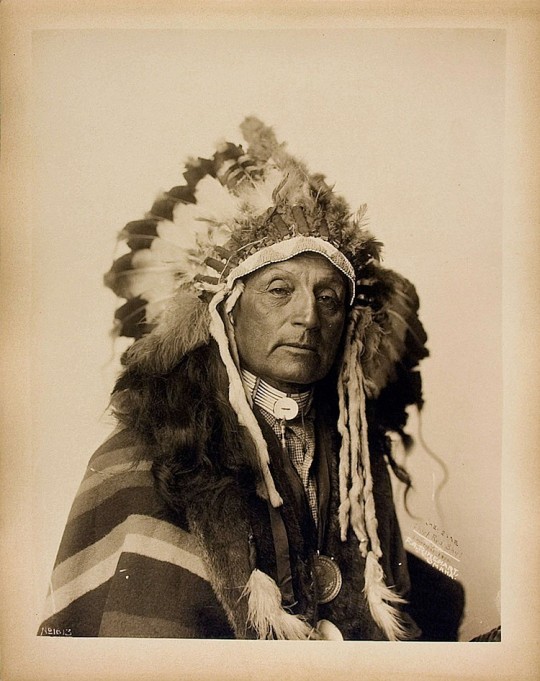
Chief Red Shirt (Ógle Ša) - 1847–1925
#indigenous#Sioux#native american#red shirt#Chief Red Shirt#buffalo bill#queen victoria#crazy horse#Little Big Horn#Oglala#ghost dance movement#lakota sioux#lakota#ogle sa#wild wester
299 notes
·
View notes
Text

37 notes
·
View notes
Text
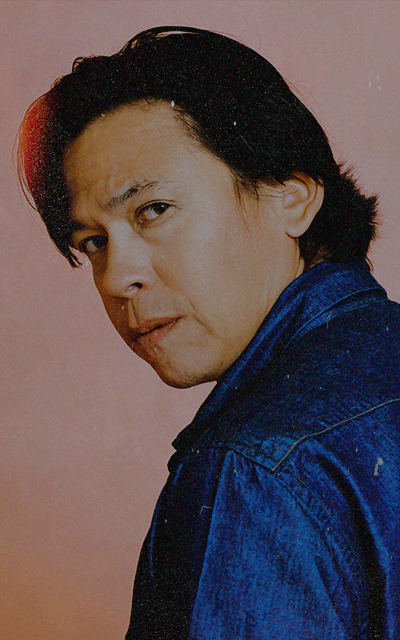
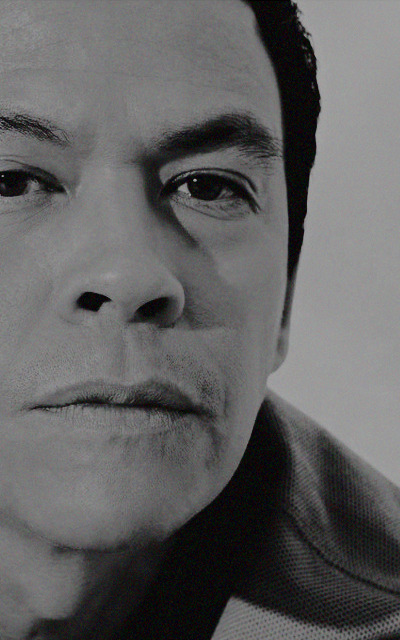


— chaske spencer
#chaske spencer#chaske spencer avatars#chaskespenceredit#indigenous#lakota sioux#avatars rpg#forum rpg#faceclaimrpg#french rpg#faceclaim#b&w#men
17 notes
·
View notes
Text
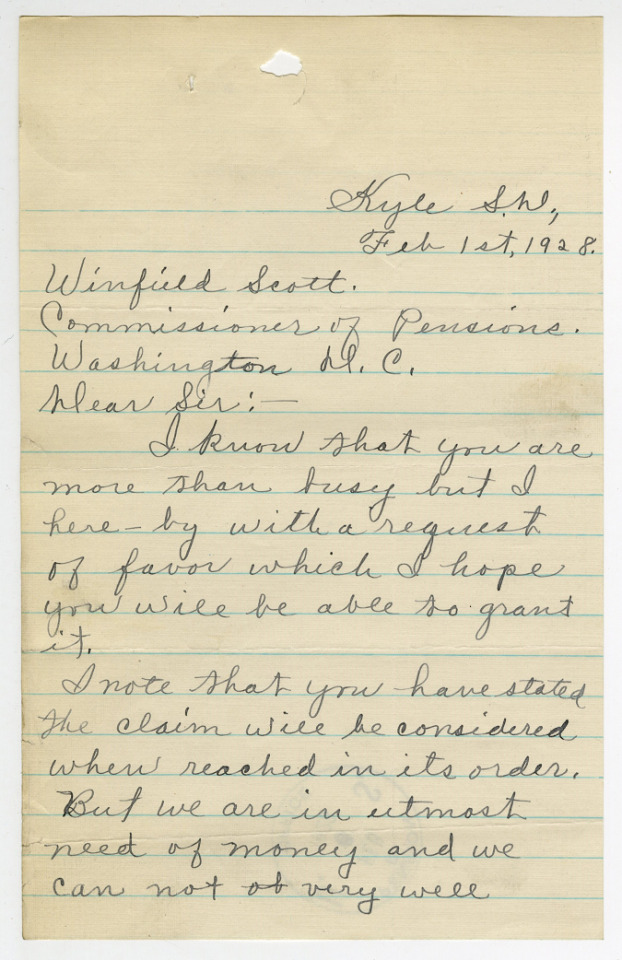
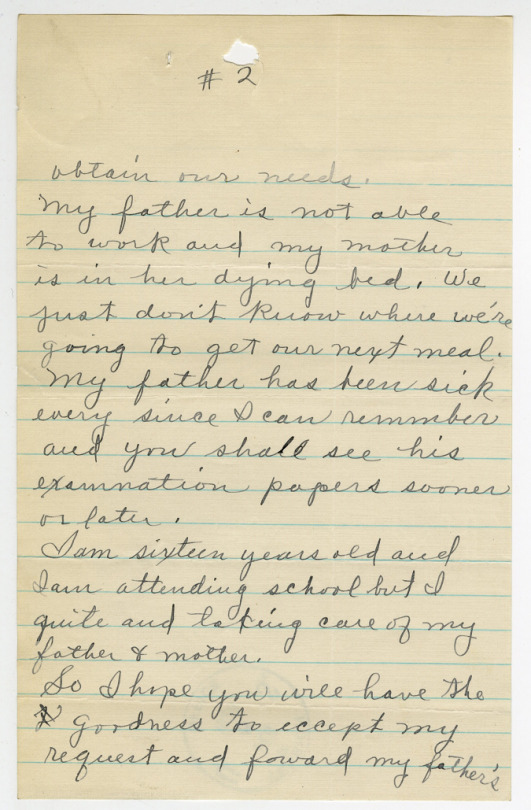

Sixteen-year-old Ruth Bluebird wrote to the Commissioner of Pensions on February 1, 1928, to try to speed along the approval for her father, former Oglala Lakota Indian Scout Jefferson Blue Bird (aka Zintka Tola).
His pension was approved six weeks later.
Record Group 15: Records of the Department of Veterans Affairs
Series: Case Files of Indian Wars Pension Applications
Transcription:
Kyle S.D.,
Feb 1st, 1928.
Winfield Scott.
Commissioner of Pensions.
Washington D.C.
Dear Sir: -
I know that you are more than busy but I here-by with a request of favor which I hope you will be able to grant it.
I note that you have stated the claim will be considered when reached in its order. But we are in utmost need of money and we can not ["ob" crossed out] very well
[page 2]
obtain our needs.
My father is not able to work and my mother is in her dying bed. We just don't know when we're going to get our next meal. My father has been sick every since I can remember and you shall see his examnation papers sooner or later.
I am sixteen years old and I am attending school but I quite and taking care of my father and mother.
So I hope you will have the [letter crossed out] goodness to eccept my request and forward my father's
[page 3]
[circled] O.K.
#3
[underlined] I.S.O. 16648
pension to him.
[underlined in red] Jefferson Bluebird
later [underlined in red] Co. D. Ind. Scts U.SA
I.S.O.
no. [underlined in red] 16648
Thank you in advance.
Very Respectfully,
I am Ruth Bluebird
#archivesgov#February 1#1928#1920s#Native American history#American Indian history#Indigenous American history#Oglala Lakota#Lakota Sioux#pine ridge reservation#military#U.S. Army#Indian Scouts
97 notes
·
View notes
Text
˖˙ 𖥦 𝙰𝙻𝙴𝚇 𝙼𝙴𝚁𝙰𝚉 . . . [ mini pack ]


follow the source link for #27 gifs of alex meraz in the movie, the last son. meraz is mexican of purepecha descent and lakota sioux. all gifs were made from scratch by me, please do not claim as your own! please like or reblog this post if you use!
#alex meraz gif pack#alex meraz gif hunt#gif hunt#gif pack#rph#supportcontentcreators#e. gif pack#fc#30s#1985#indigenous#purepecha#lakota sioux#cis man#poc#moc
148 notes
·
View notes
Photo

Spotted Elk (Lakota: Uŋpȟáŋ Glešká, sometimes spelled OH-PONG-GE-LE-SKAH or Hupah Glešká: 1826 approx – December 29, 1890), was a chief of the Miniconjou, Lakota Sioux. He was a son of Miniconjou chief Lone Horn and became a chief upon his father's death. He was a highly renowned chief with skills in war and negotiations. A United States Army soldier, at Fort Bennett, coined the nickname Big Foot (Si Tȟáŋka) – not to be confused with Oglala Big Foot (also known as Ste Si Tȟáŋka and Chetan keah).
In 1890, he was killed by the U.S. Army at Wounded Knee Creek, Pine Ridge Indian Reservation (Chankwe Opi Wakpala, Wazí Aháŋhaŋ Oyáŋke), South Dakota, USA with at least 150 members of his tribe, in what became known as the Wounded Knee Massacre.
#Spotted Elk#Uŋp��áŋ Glešká#Hupah Glešká#native american#Lakota Sioux#Miniconjou#Wounded Knee Massacre#Wounded Knee#XIX century#people#portrait#photo#photography#Black and White
47 notes
·
View notes
Text
"I did not know then how much was ended. When I look back now from this high hill of my old age, I can still see the butchered women and children lying heaped and scattered all along the crooked gulch as plain as when I saw them with eyes still young. And I can see that something else died there in the bloody mud, and was buried in the blizzard. A people's dream died there. It was a beautiful dream. And I, to whom so great a vision was given in my youth, — you see me now a pitiful old man who has done nothing, for the nation's hoop is broken and scattered. There is no center any longer, and the sacred tree is dead."
-Black Elk (Heȟáka Sápa) on the Wounded Knee Massacre.
#indigenous rights#native americans#lakota#black elk#indiginous#native american rights#wounded knee#wounded knee massacre#lakota sioux#sioux#sioux nation#american imperialism#imperialism#atrocities#human rights violations#human rights abuses#indigenous peoples#first nations#anti imperialism#racial and ethnic discrimination#racism in america#racial justice
4 notes
·
View notes
Text
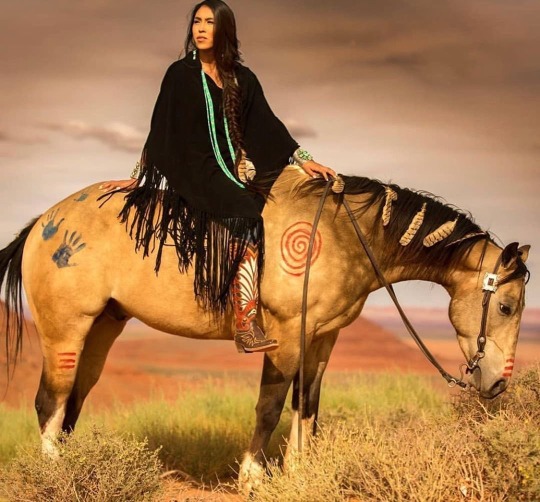
“We are addicted to our thoughts.
We cannot change anything if we cannot change our thinking.”
— S. Kalwar, 🪶✨
18 notes
·
View notes
Text
indigenous artifacts dating from the wounded knee massacre returned to the lakota sioux people by a museum
27 notes
·
View notes
Text
✨☆彡Pharaoh☆彡✨





#ocean#incredibly grateful for this vessel#grateful for my spirit#grateful for all the lessons learned and all the blessing pouring in 10 fold#winkté#2 spirit#two spirit#lakota sioux#cherokee#indigenous#pharaoh#egyptian pharaoh#lord ganesh#kali maa#goddess kali#lord shiva#bast#bastet#dua bastet#locs#long locs#loc journey#okay to reblog
397 notes
·
View notes
Text
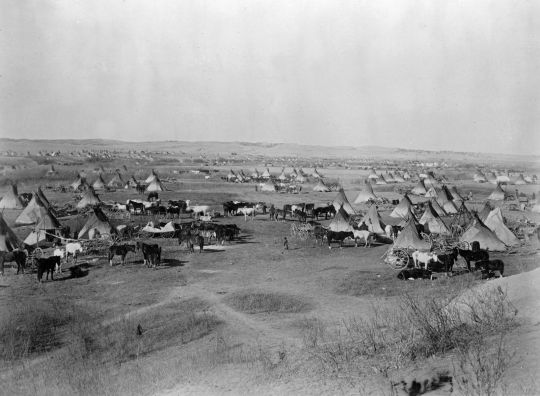
Lakota native American camp in South Dakota. 1877

Bird's Eye View of Sioux Camp at Pine Ridge, South Dakota

Lakota native American camp on river Brule near Pine ridge, South Dakota, 1891.

Lakotas lived in tipis that could be easily transported from one camp to another. This mobility suited their bison hunting economy. A small camp like this would have been set up near the place where the Lakotas were hunting bison. The people would have remained very quiet in a hunting camp. The tops of the tipis are dark with smoke from the cooking fires.
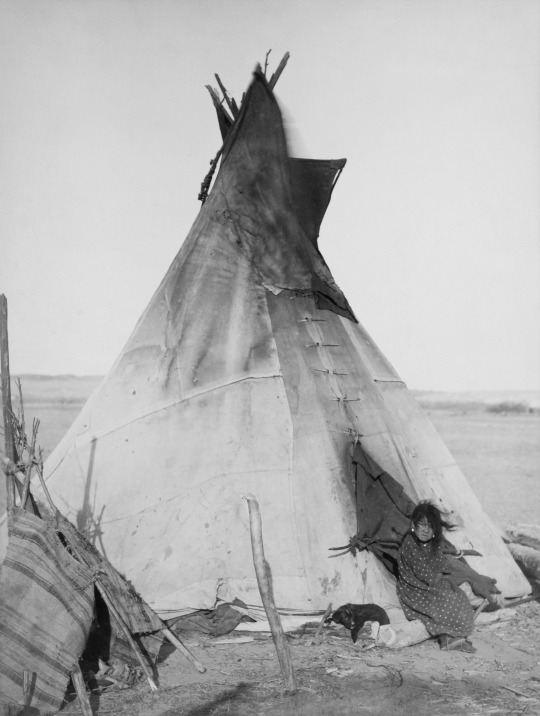
A young Oglala girl sitting in front of a tipi, with a puppy beside her, probably on or near Pine Ridge Reservation

This man’s regalia (ceremonial clothing) reflects the spiritual importance the Lakotas gave to the bison. His headdress was made from the head and horns of a bison bull. The vest, wrist bands, and ankle bands were made from bison hide.

Native Americans performing ritual Ghost Dance. One standing woman is wearing a white dress, a special costume for the ritual dance, 1890.

Sioux warriors typical of those who fought Custer photographed in dance costumes.

Ghost Dance Drum by George Beaver, wood, rawhide and pigment, late 1890s
#photography#historical photos#lakota#indigenous#native american#Ghost Dance#oglala#bison#lakota sioux#sioux#south dakota
16 notes
·
View notes
Text

HEY CUSTARD 😁 JUST TO LET YOU KNOW THE LAKOTA DID KICK "YOUR" ASS ... ✊🏼
#native american#littlefeather wolf#wayawolf412#native american art#lakota miniconjou#lakota sioux#sioux
11 notes
·
View notes
Text

Amanda Polchies before of riot Police,
Rexton, NB, Canada (17 Oct 2013) photo Ossie Michelin
N.B. fracking protests and the fight for aboriginal rights : RCMP arrested 40 protesters near Rexton.
Amanda Polchies is a Lakota Sioux and Mikmaq woman who lives in Elsipogtog First Nation.
She became known for an iconic image taken of her while participating in a protest against hydraulic fracturing near the village of Rexton, New Brunswick. via Wikipedia
2 notes
·
View notes
Text
We the Lakota people have a prophecy about the white buffalo calf, and how that prophesy originated was that we have a sacred bundle, a sacred peace pipe, that was brought to us about 2,000 years ago by what we know as the White Buffalo Calf Woman.
The story goes that she appeared to two warriors at that time. These two warriors were out hunting buffalo, hunting for food in the sacred Black Hills of South Dakota, and they saw a big body coming toward them. And they saw that it was a white buffalo calf. As it came closer to them, it turned into a beautiful young Indian girl.
At that time one of the warriors thought bad in his mind, and so the young girl told him to step forward. And when he did step forward, a black cloud came over his body, and when the black cloud disappeared, the warrior who had bad thoughts was left with no flesh or blood on his bones. The other warrior kneeled and began to pray. And when he prayed, the white buffalo calf who was now an Indian girl told him to go back to his people and warn them that in four days she was going to bring a sacred bundle.
So the warrior did as he was told. He went back to his people and he gathered all the elders and all the leaders and all the people in a circle and told them what she had instructed him to do. And sure enough, just as she said she would, on the fourth day she came. They say a cloud came down from the sky, and off of the cloud stepped the white buffalo calf. As it rolled onto the earth, the calf stood up and became this beautiful young woman who was carrying the sacred bundle in her hand.
And as she entered into the circle of the nation, she sang a sacred song and took the sacred bundle to the people who were there to take of her. She spent four days among our people and taught them about the sacred bundle, the meaning of it. And she taught them seven sacred ceremonies: one of them was the sweat lodge, or the purification ceremony. One of them was the naming ceremony, child naming. The third was the healing ceremony. The fourth one was the making of relatives or the adoption ceremony. The fifth one was the marriage ceremony. The sixth one was the vision quest. And the seventh was the sundance ceremony, the people’s ceremony for all of the nation.
She brought us these seven sacred ceremonies and taught our people the songs and the traditional ways. And she instructed our people that as long as we performed these ceremonies we would always remain caretakers and guardians of sacred land. She told us that as long as we took care of it and respected it that our people would never die and would always live.
When she was done teaching all our people, she left the way she came. She went out of the circle, and as she was leaving she turned and told our people that she would return one day for the sacred bundle. And she left the sacred bundle, which we still have to this very day. And the sacred bundle is known as the White Buffalo Calf Pipe because it was brought by the White Buffalo Calf Woman. It is kept in a sacred place on the Cheyenne Indian reservation in South Dakota. it’s kept by a man who is known as the keeper of the White Buffalo Calf Pipe, and his name is Arvol Looking Horse.
And when she promised to return again, she made some prophesies at that time ….One of those prophesies was that the birth of a white buffalo calf would be a sign that it would be near the time when she would return again to purify the world. What she meant by that was that she would bring back harmony again and balance, spiritually.
9 notes
·
View notes
